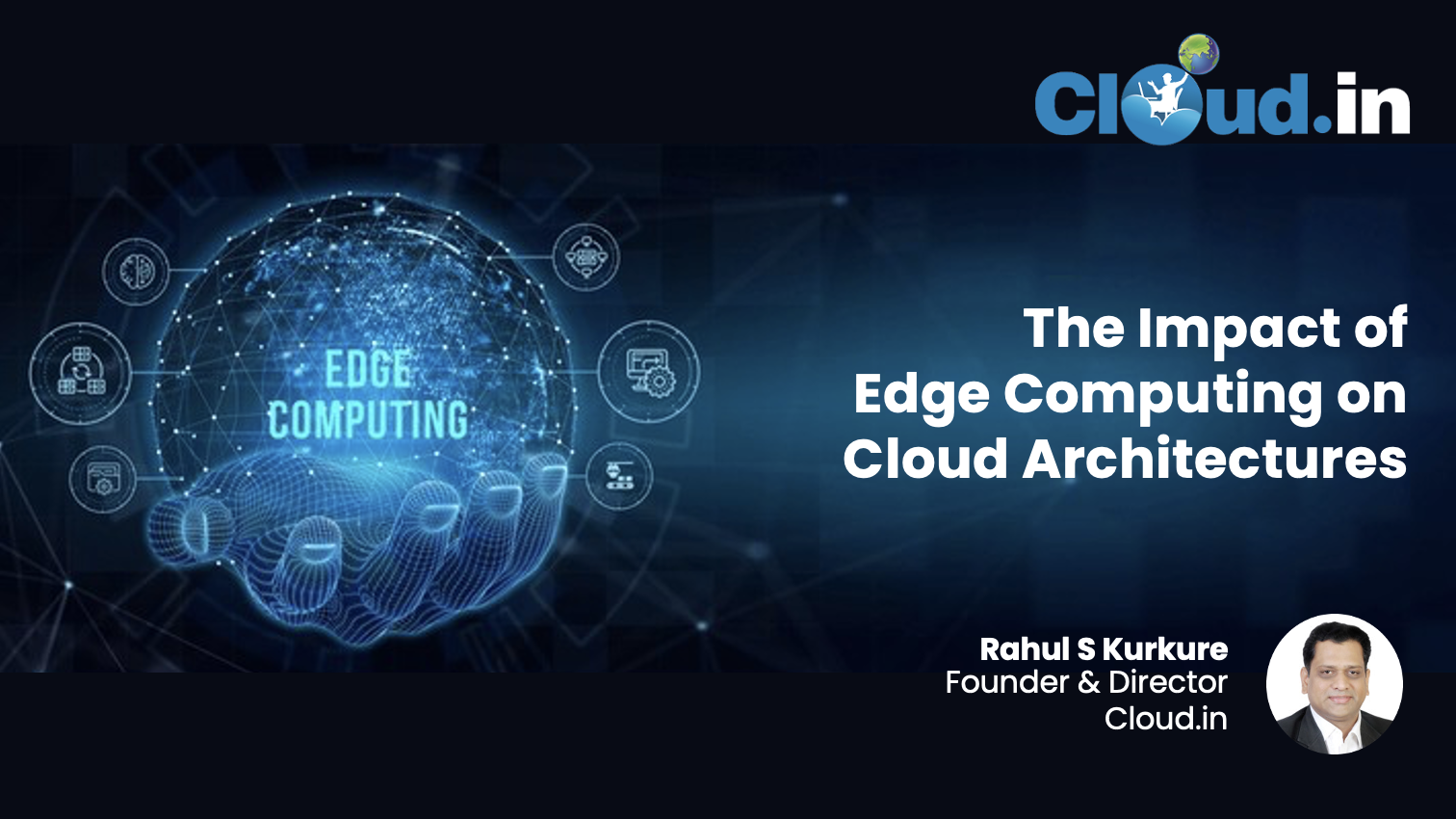The Impact of Edge Computing on Cloud Architectures - Rahul S Kurkure, Founder and Director of Cloud.in

Edge computing benefits different users in different ways and everyone has their own expectations of this amazing technology. Be it in-hospital patient monitoring cloud gaming, autonomous vehicles, smart grid, or content delivery, the expectations from edge computing keep dramatically increasing every day. All this is possible because of edge computing’s ability to process data closer to the source of its generation. This technology known for its decentralized approach is driven by the need for real-time data processing and improved efficiency. It addresses critical IT infrastructure challenges like bandwidth limitations, growing network congestion, increased latency, and managing data generated and connected by IoT devices and sensors.
According to Markets and Markets, the global edge computing market size is expected to reach USD 111.3 billion in 2023, growing at a CAGR of 15.7% during the forecast period. This significant growth is attributed to the exponentially increasing data volumes and network traffic. Furthermore, in today’s ever-evolving technology landscape, edge computing has brought about a shift in traditional cloud architectures. In this article, let us take a look at the impact of edge computing on cloud architecture.
Distributed computing
model
Centralized computing models in traditional cloud architectures are seeing a shift with the introduction of edge computing. Now, cloud systems are transforming to incorporate edge nodes leading to a distributed computing model where processing of data is localized. In such a distributed approach with edge nodes independently handling specific workloads, the load on the centralized cloud server is reduced to a large extent.
Cost efficiency
Edge computing has revolutionized businesses. Organizations can optimize the response time with real-time computing capabilities. There is also a reduction in network congestion. The costs associated with the data transfer over networks also get significantly reduced. This is extremely beneficial in cases where a huge amount of data generated by IoT, connected devices, and sensors is processed locally before its transmission to the cloud, thereby optimizing bandwidth usage. Cloud architectures have to adapt to suit this bandwidth optimization.
Enhances innovation opportunities
The cloud and the edge together deliver a robust framework to support innovation. Cloud’s numerous resources establish custom container apps for microprocessors and remote operating systems. The cloud also offers platforms for developing analytical algorithms and edge computing applications. Businesses can leverage edge computing to process data faster allowing enhanced responsiveness and new possibilities for innovation.
Improved scalability
With workloads distributed across edge devices, a more scalable architecture is established. Even if there is an increase in the number of devices and users, edge computing can manage the increase in workloads without adding any pressure on a central system. Edge computing resources can be scaled as and when required with this distributed edge-to-cloud architecture.
Further flexibility
By integrating edge and cloud, organizations can benefit from hybrid cloud solutions where the strengths of centralized cloud services and decentralized edge nodes are harnessed. Businesses can leverage this hybrid approach for tasks that require the scalability of the cloud and use edge computing for applications that need low latency and quick response. In such cases, cloud architectures are adapting to seamlessly integrate and manage the hybrid environment and providing organizations the much-required flexibility.
Enhanced security
With cyber threats more prevalent and sophisticated today, organizations are accelerating their efforts to close IIoT security gaps. On the other hand, cybercriminals are leveraging advanced tools and technologies to look for security gaps in business network channels to steal critical data and halt operations. With edge computing capabilities of processing data at the device levels, threat actors are left with fewer and fewer network channels to attack. The decentralized network also reduces vulnerabilities. Cloud architectures are already addressing security concerns with encryption, controlled access, and secure communication protocols. As edge devices fall under the umbrella of cloud systems, there is a growing importance of protecting edge nodes as well as the communication between edge and cloud components making cybersecurity a top priority.
It is
true edge computing architecture is bringing about a paradigm shift in how we
process and analyze data in real time.
Integration of edge computing certainly has a transformative impact on
cloud architecture as it will determine how we approach data processing in the
future, thereby laying the foundation for a more efficient computing
ecosystem. Furthermore, edge computing
as a key component of any organization’s cloud strategy will become
increasingly evident with the growing IoT devices and the introduction of the
5G network.



